In October the world began celebrating the 130th birthday anniversary of Le Corbusier (1887-1965), arguably the most important and influential architect of the 20th century. In his time, this great urban planner determined a significant part of the future of world architecture. His followers worked throughout the world, developing the famous Five Points of Architecture: the necessary presence of supporting columns, a flat roof, horizontal windows, a plain façade and a freely-designed ground plan.
The USSR, which hosted the architect three times, implemented only one of his building designs – the Tsentrosoyuz (Central Union) Building. However, the ideas of the Frenchman with Swiss origins were widely popular among Soviet modernist architects. Russia Beyond remembers their most vivid constructions in the Soviet Union.

Narkomfin building. Exterior view.
Legion Media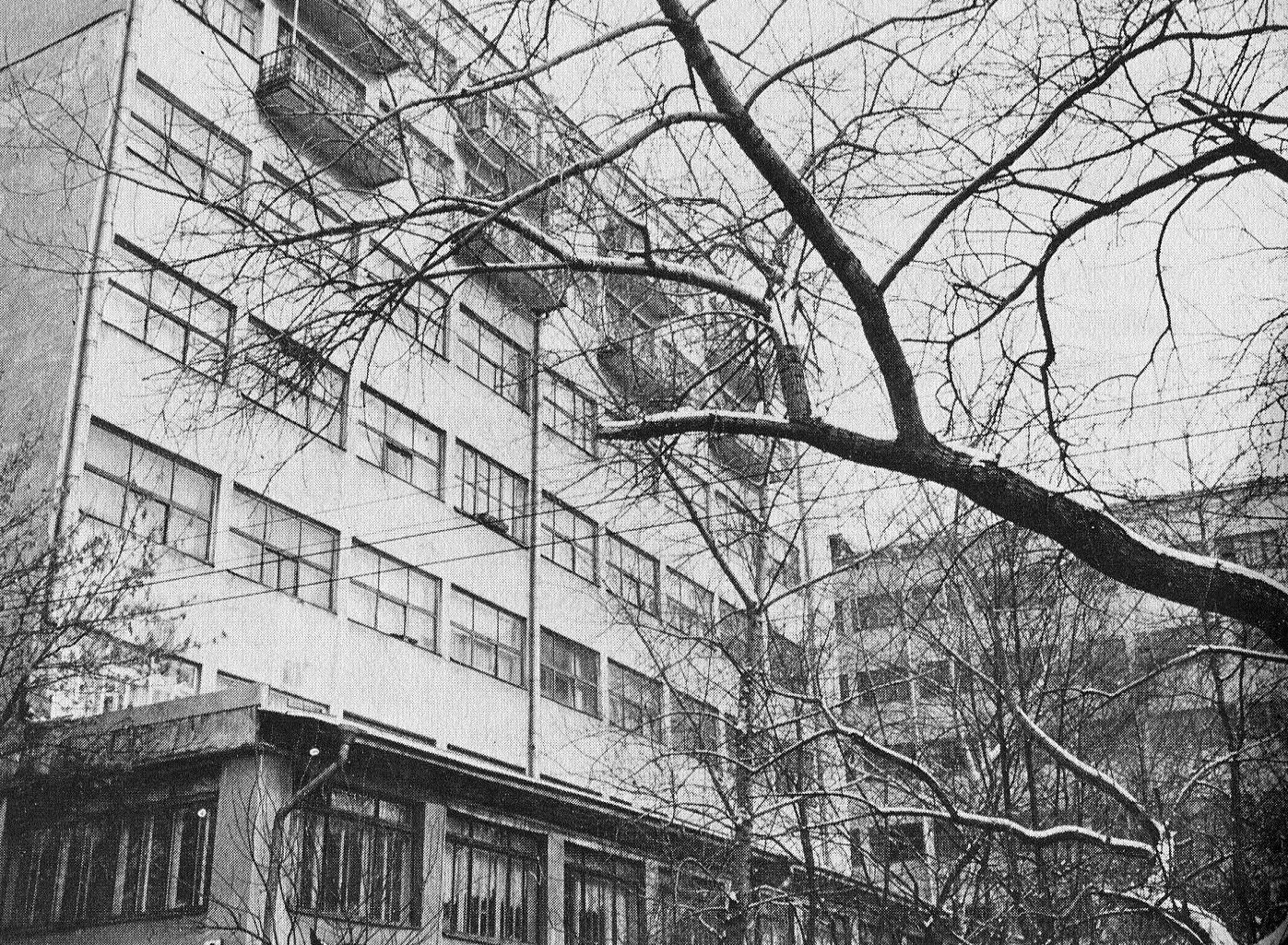
Demonstrative Construction complex.
Archive PhotoThe Demonstrative Construction complex for construction workers also combined features of the old and new ways of life, the so-called “machines for living.” The building was designed by the architects who had conceived the Narkomfin Building in the same period. The complex consists of two residential buildings intended for both individual and family habitation and a two-story communal block for socialization.
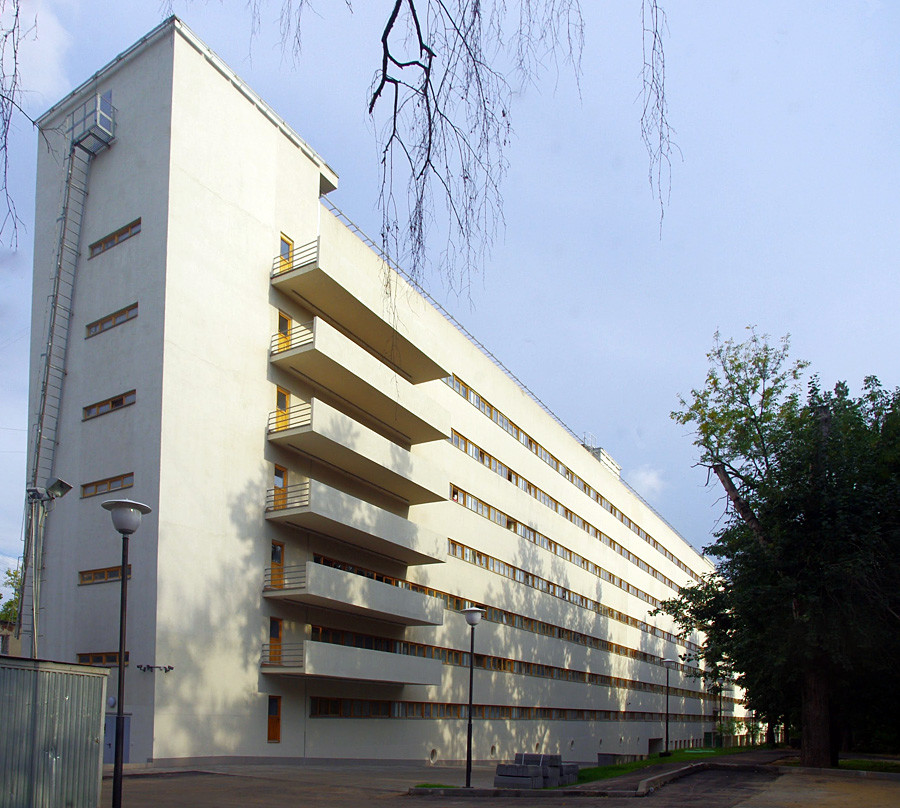
Communal House of the Textile Institute.
Artem SvetlovIn 1929 emerging architect Ivan Nikolaev planned the Communal House of the Textile Institute in accordance with Le Corbusier’s ideas. Two thousand people were supposed to live and study in this building following a very rigid order. The building has the shape of the letter H. Six-meter-square cabins served as bedrooms, plus there were student shower rooms, a cafeteria and finally a study area. At the end of the

Myasnitskaya street. The Tsentrosoyuz Building or Centrosoyuz Building constructed in 1933 by Le Corbusier and Nikolay Kolli.
Konstantin Kokoshkin/Global Look PressThe complex was built in accordance with Le Corbusier’s five rules. Ramps instead of stairs became the project’s most prominent feature. They were set up throughout the structure. Furthermore, the first open space offices were installed in the building. When completed, it was the largest office administrative building in Europe.
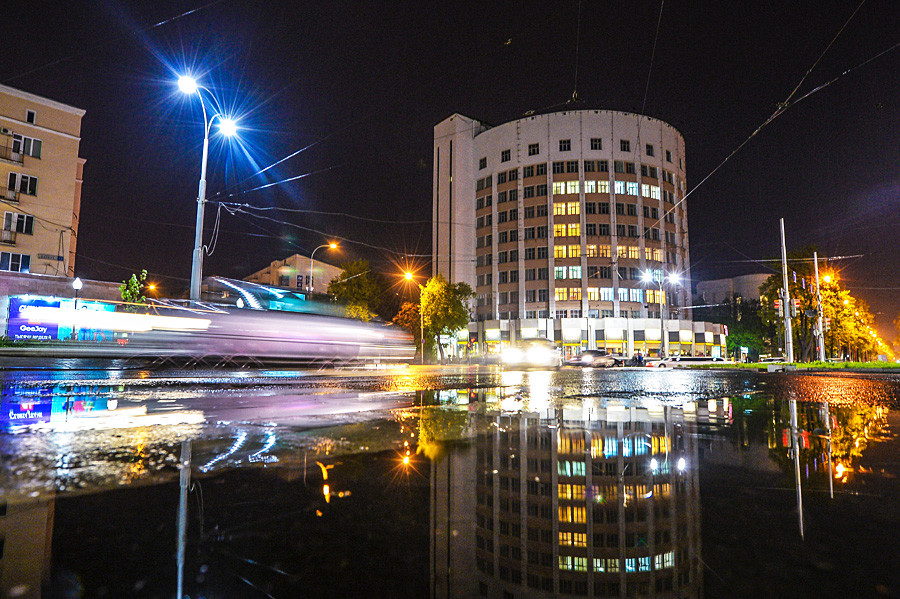
The Chekist Town.
Donat Sorokina/TASS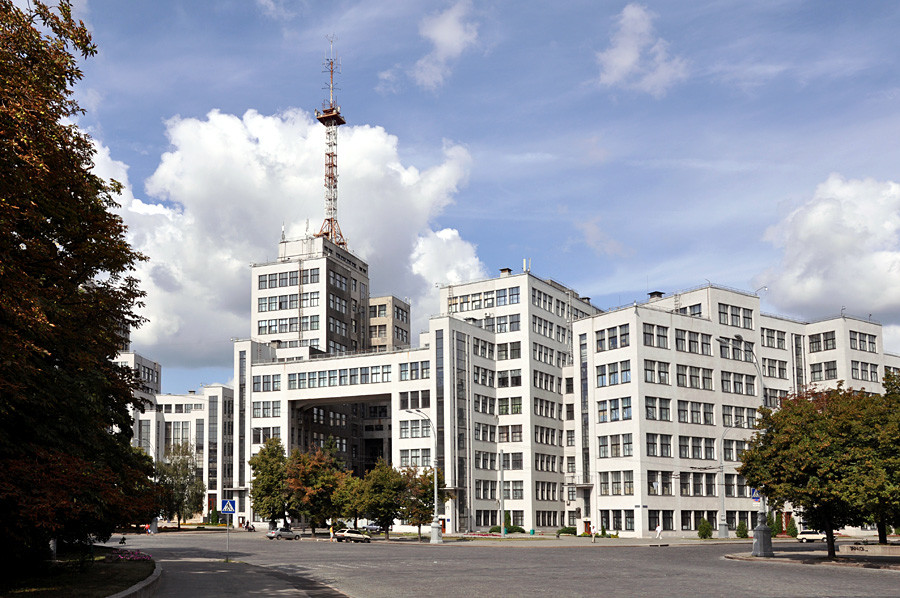
The House of Governmental Industry.
Legion MediaThis was one of the USSR’s first skyscrapers and it was perhaps the only example of a high-rise constructivist building in the country. The House of Governmental Industry was built between 1925 and 1928. Project development was in the hands of a group of architects who were among the first to apply Le Corbusier’s principles to an administrative building (in general, the Swiss-French architect planned private villas and multi-apartment buildings). The building is included in UNESCO’s preliminary list of monuments.
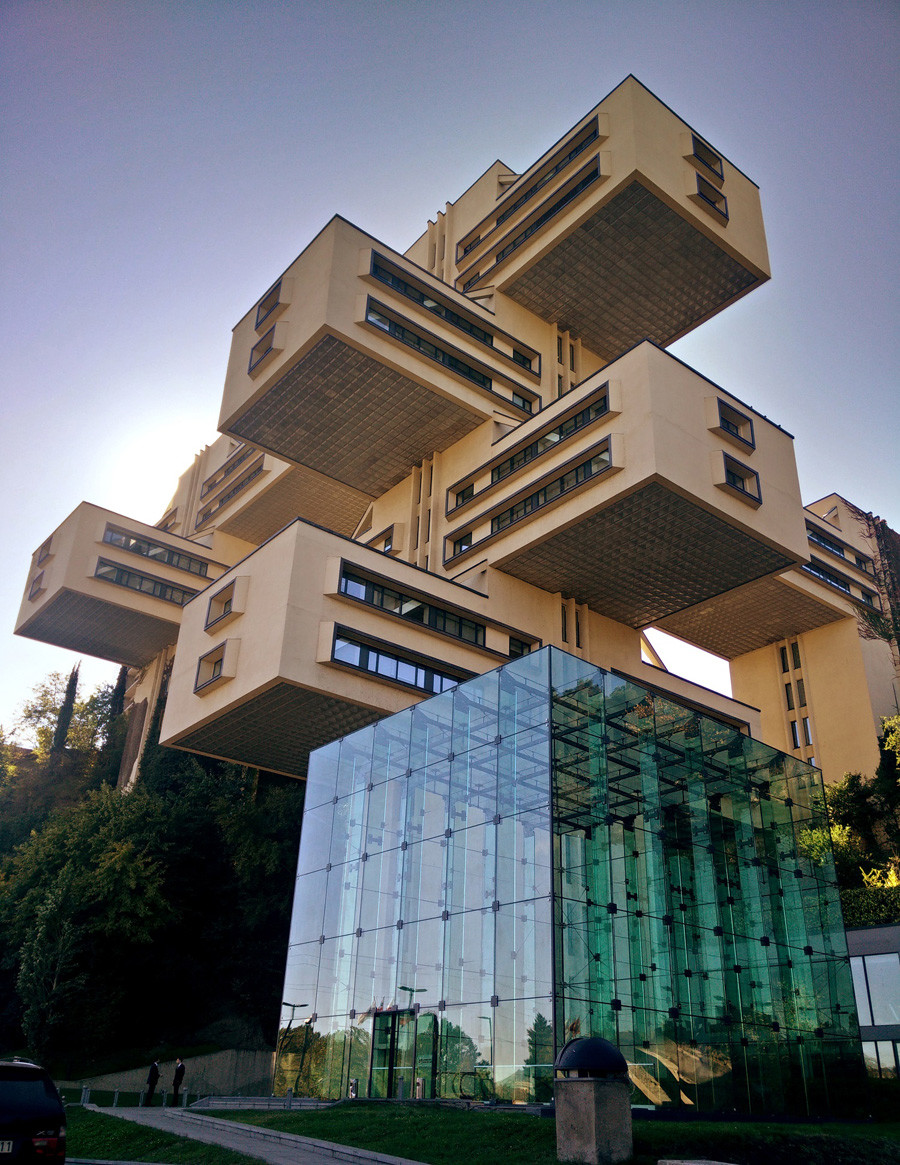
The building of Ministry of Roads.
Tinalomidze7This is another example of a free interpretation of Le Corbusier’s ideas by Soviet architects. The building, constructed in 1975, basically symbolizes a branching out road network. Its body consists of five horizontal two-story blocks that are supported by three vertical rods attached to a cliff. In 2007 the structure was recognized as a national architectural monument.
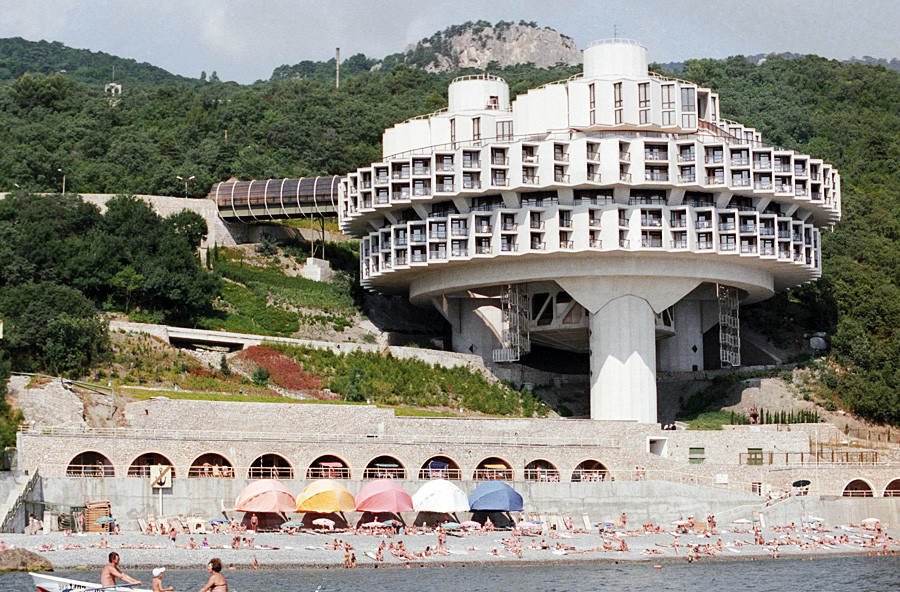
The Friendship holiday hotel in Yalta on the Black Sea coast.
Boris Babanov/RIA Novosti
Alvar Aalto Library in Vyborg.
NinaraasThis showpiece construction, designed by modernist architect Alvar Aalto, was constructed between 1927 and
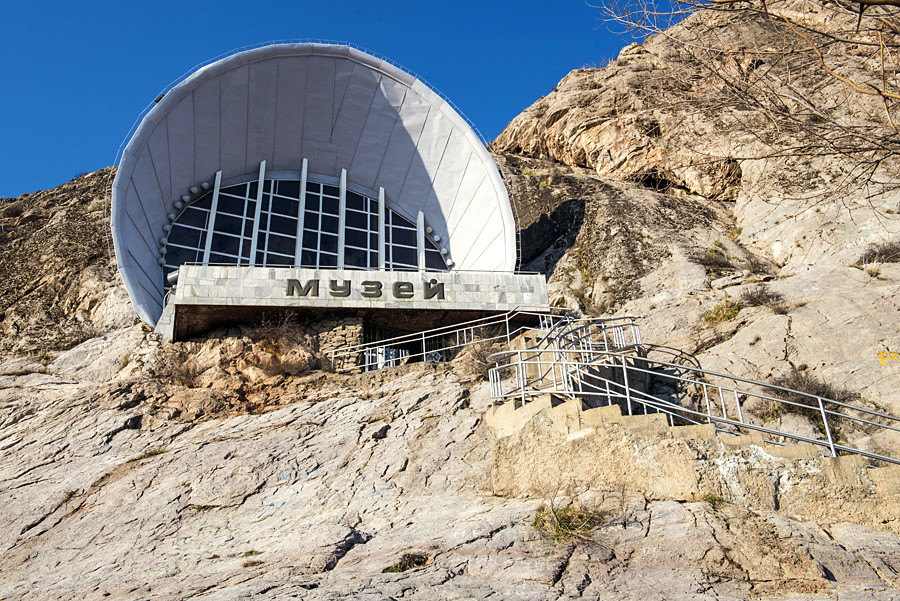
A museum on the sacred mountain of Sulaiman-Too in the city of Osh.
Tabyldy Kadyrbekov/RIA NovostiThis is one of the most remarkable structures of Soviet modernism. Constructed in 1978, it was carved into the side of Sulayman Mountain. Although externally this building hardly resembles Le Corbusier’s typical structures, the principles according to which it was built are representative of the modernist view. The structure mimics the adjacent cliff: the entrance in the form of a concrete arch with continuous glazing and longitudinal beams blends with the mountainous relief. Behind the gate stands a two-story cavernous complex that houses the exhibits.
If using any of Russia Beyond's content, partly or in full, always provide an active hyperlink to the original material.
Subscribe
to our newsletter!
Get the week's best stories straight to your inbox